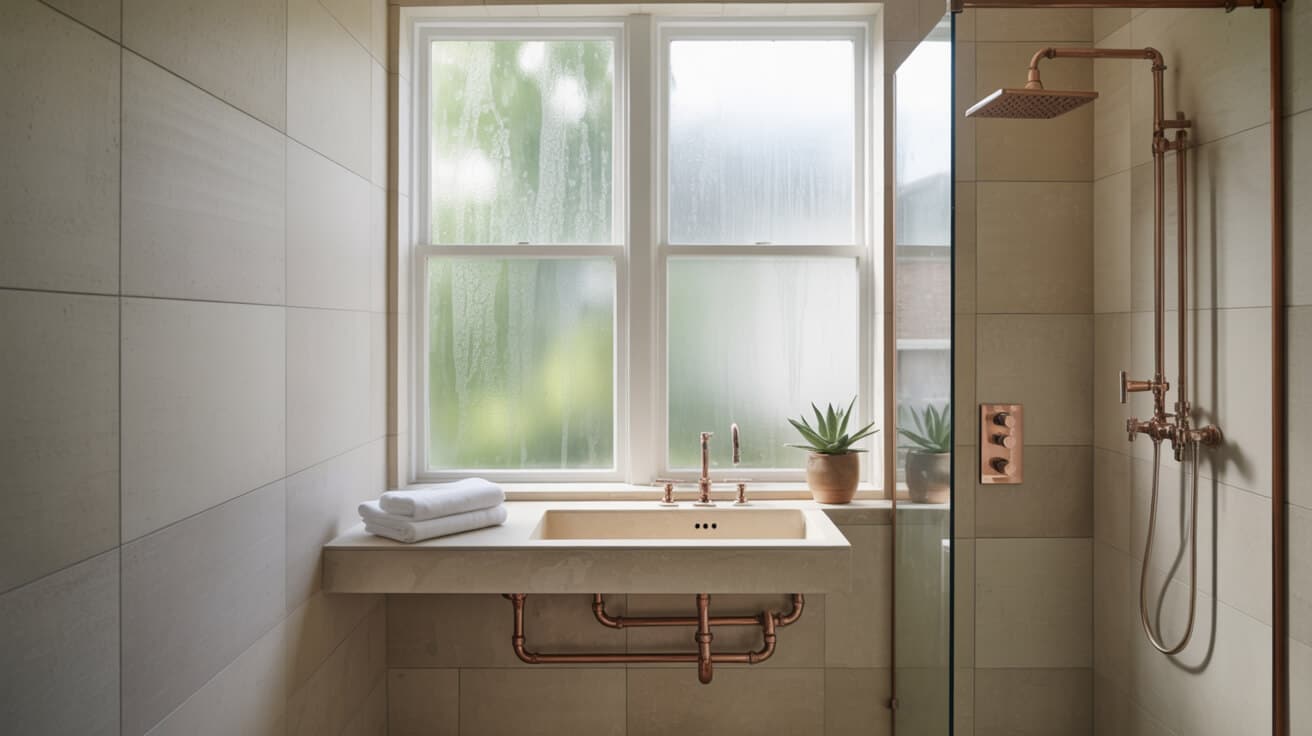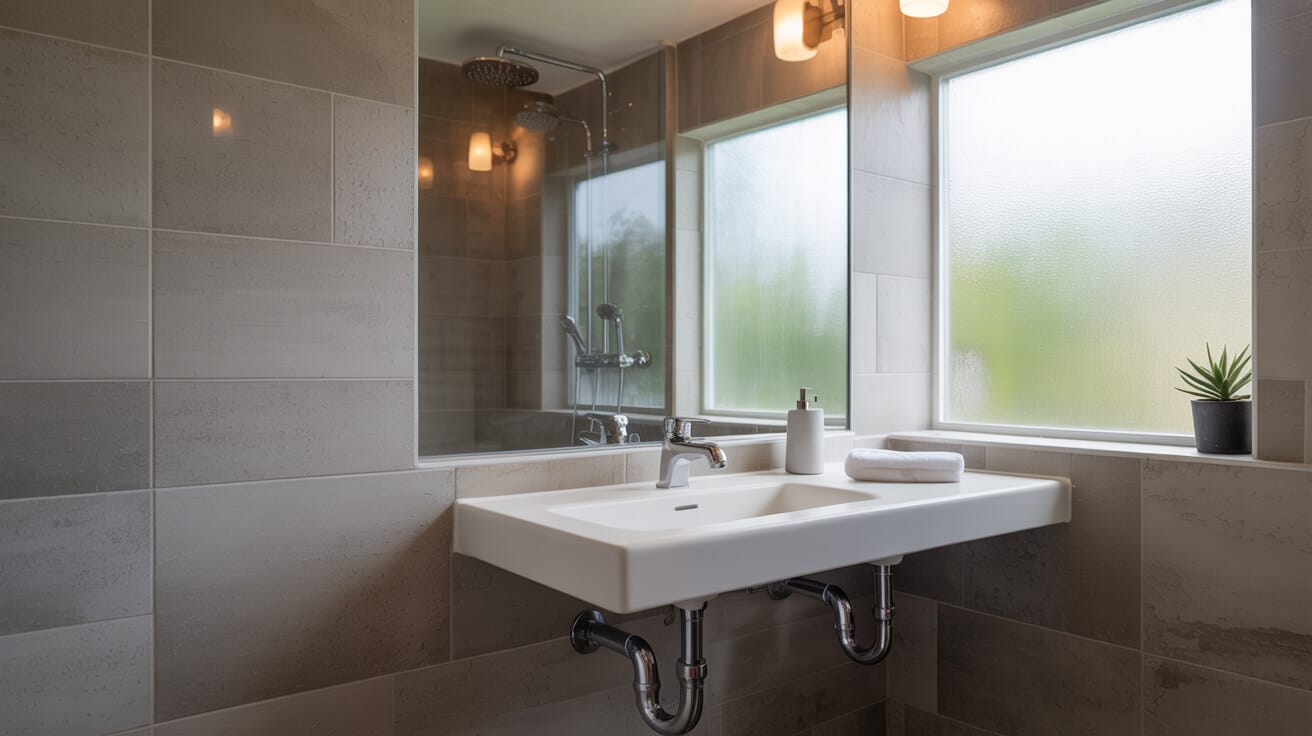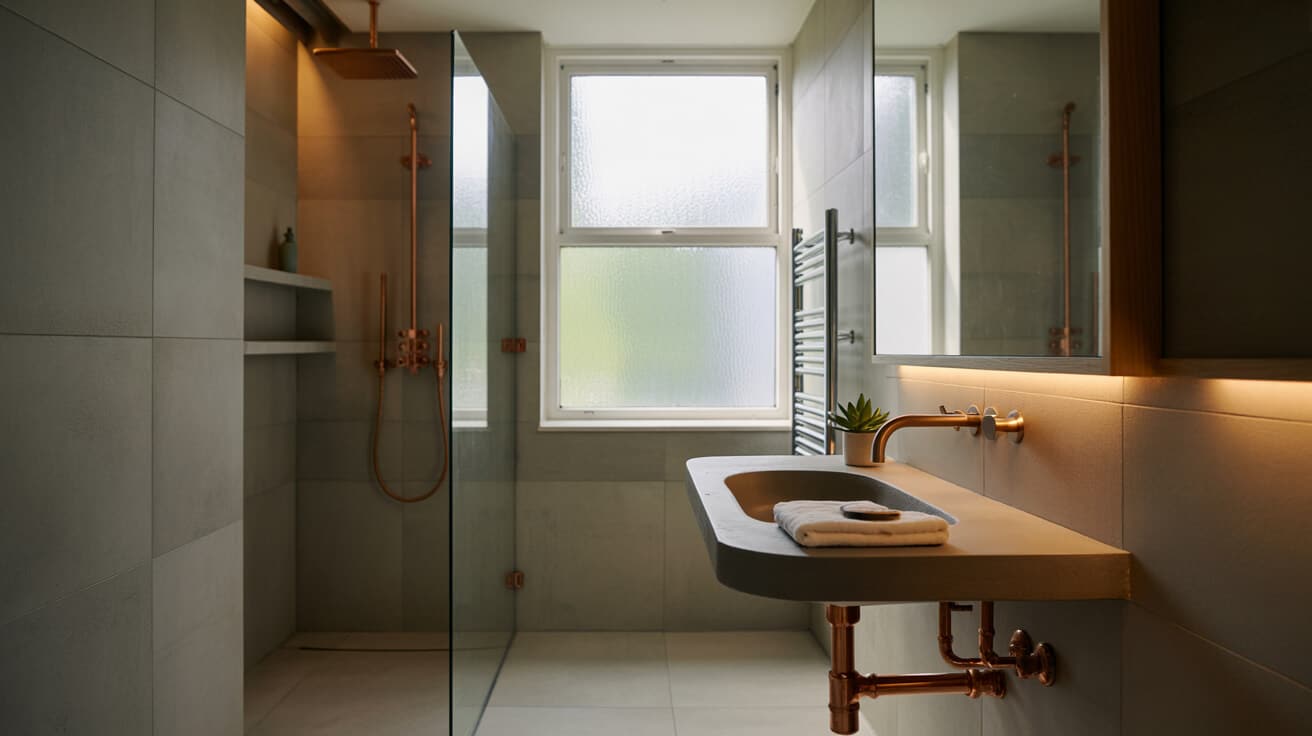Terraced properties—ubiquitous in Britain and across the Commonwealth—demand tailored plumbing systems, reflecting their evolution from Victorian sanitary design through present-day retrofits. The complex interplay of legacy materials, limited internal space, and shared service routes results in unique functional and regulatory challenges for owners, landlords, managing agents, and tenants alike. Success demands not only technical acumen but a nuanced understanding of cultural context, compliance standards, and the lived experiences of residents who depend on reliable water, heating, and waste management.
Sophisticated plumbing and heating providers, including Plumbers 4U, navigate this dynamic space by aligning contemporary installation standards and safety certifications with an awareness of fragile infrastructure, party-wall sensitivities, and the competing priorities of asset managers and everyday occupants. Mastery of these systems enables not only effective repairs and upgrades but fosters asset value and community health for generations.
Etymology or Name Origin
The nomenclature “terraced house” arises from eighteenth- and nineteenth-century British urban planning, describing residential buildings arranged in linear groups with no lateral space between units. The structure’s etymology is rooted in the Italian “terrazza,” meaning a raised walkway, evolving into a real estate term denoting property constructed in contiguous alignment. As English towns densified, the model was adopted for efficient land use, translating later into “row house” in North America and “townhouse” in other global markets, though distinct cultural and regulatory mores shaped its plumbing systems and infrastructural logic.
Overview / Context
Terraced homes account for a substantial portion of the UK domestic built environment, with millions still in active use more than a century after construction. Defined by narrow frontage and depth, party walls, and rear garden plots, these dwellings, originally developed for working- and middle-class families, saw widespread construction in waves spanning the Victorian era, interwar years, and post-war infill periods. Such properties are common in urban centres, suburban belts, and repurposed into Houses in Multiple Occupation (HMOs), social housing units, and privately-let investments.
The architectural form directly influences system design, constraining supply and waste pipe routes to wall chases, subfloor voids, boxed-in risers, and communal stacks. Owners and managers are often forced to balance heritage preservation with necessary upgrades, navigating both physical and legal complexity. Market trends reveal persistent demand for such housing, driving continual cycles of refurbishment, adaptation, and regulatory scrutiny, especially around water safety, energy efficiency, and hygiene.
History
Early Sanitation and Water Supply
Initial urban terraces lacked integrated waste and water systems, relying on external privies, communal standpipes, and basic drainage into rudimentary sewers. Victorian public health reforms initiated phased retrofits, with lead supply and cast iron soil pipes routed via the narrowest available chases—oftentimes boxed into corners or beneath entrance halls.
Victorian and Edwardian Each Era
As construction boomed in the late 1800s and early twentieth century, terraced homes standardised internal lead and galvanised steel pipework, cast iron soil stacks, and cold water storage in attic spaces. Sanitary design evolved from communal to “self-contained,” although with minimal attention to future access or expansion, establishing the technical constraints that persist today.
Mid-20th Century Upgrades
Twentieth-century reforms replaced hazardous materials and expanded potable supply with copper and, later, plastics. Flush toilets and internal baths became the norm, drawing indirect supply from cold water tanks. As heating systems improved, gas boilers and centralised radiators replaced open fireplaces and gravity-fed arrangements, requiring new methodologies for pipe insulation, pressure regulation, and component boxing.
Contemporary and Retrofit Era
Ongoing demands for energy efficiency and safety have driven further evolution, including adoption of pressurised, unvented hot water cylinders, condensing boiler systems, thermostatic mixing valves, and water-saving fixtures. Regulatory frameworks such as Water Supply (Water Fittings) Regulations 1999 and Building Regulations Part G/H/L now govern installations, compelling owners and service providers to judiciously balance compliance, affordability, and the architectural ethos of the dwelling. Professional firms like Plumbers 4U routinely combine retro-commissioning, material testing, and digital record-keeping to manage upgrades and legal obligations across multi-occupant tenures.

System design and core concepts
Water, waste, and heating networks within terraced houses are defined by the constraints of shared sidewalls, tight service corridors, and variable legacy infrastructure. Most properties operate with indirect cold water feeds (from a roofspace tank) or modern direct mains connections, the choice influenced by building age, pressure requirements, and water safety codes. Hot water is delivered through vented cylinders, unvented pressurised installations requiring strict G3 compliance, or instantaneous combi boilers where space is at a premium. Heating systems utilise sealed or open-vented circuits, with pipework often snaking through boxed skirting, floor joists, and up party wall chases to reach appropriately sized radiators.
Drainage and soil networks reflect the evolution of urban waste management: older properties may route all waste—wastewater and WC soil—through a shared vertical stack accessed by multiple dwellings, increasing cross-household risk but economising space. Other layouts employ single-stack designs or multiple independent drops for kitchens, bathrooms, and ground floor appliances. smart controls and zone-based adaptations, more common in premium upgrades, further complicate the system landscape, introducing digital monitoring, remote diagnostics, and variable temperature control as modern expectations.
Table: Supply and Heating System Variants
| System Type | Typical Era | Characteristics | Compliance Required |
|---|---|---|---|
| Indirect cold | Victorian–modern | Roofspace tank, gravity circuits | Loft insulation, Legionella |
| Direct feed | Post-1970s | Mains to all outlets | Water Regs (WSR1999), PRV |
| Vented HW | 1900–present | Loft feed, cylinder | TMV at baths, G3 if new fits |
| Unvented HW | 1990s–present | Pressurised, sealed, no tank | G3, discharge compliance |
| Combi boiler | Modern upgrades | On demand, compact, mains fed | Condensate route, flue regs |
Functionality / Purpose / Applications
Plumbing in terraced housing forms the backbone of every domestic and commercial process, ensuring uninterrupted supply of safe water, prompt removal of waste, and delivery of productive heating for health, comfort, and hygiene. The layout of services directly affects your living experience: underprovision leads to low pressure, cold spots, or slow drainage, while overprovision or ill-considered upgrades can void insurance, breach regulations, or create hazards for you and your tenants.
Where letting or HMO properties are involved, plumbing assumes additional importance as a regulatory asset—annual gas safety (CP12) and unvented certificate (G3) checks must be scheduled, documented, and remedied. Digital reporting and asset logs, now common industry practice, enable you to manage your property portfolio more proactively, anticipate future repairs, and demonstrate compliance in audits. Retrofit projects for extensions, loft conversions, or accessibility adaptions nearly always require rerouting existing supplies, relocating stopcocks, and verifying pressure and waste runs—each step demanding granular system knowledge and, preferably, the expertise of a certified provider such as Plumbers 4U.
For energy and water efficiency, best practice suggests insulated pipework, thermostatic radiator valves, water-saving fixtures, and programmable control units. These adaptations do not only deliver cost savings but insulate your asset from regulatory and market volatility.
Classifications / Types / Variants
Supply Arrangements
- Indirect Supply System: Utilises a loft or attic tank to provide water to cold taps, cylinder, and WC, supporting high flow and buffer against mains interruption but with increased Legionella risk.
- Direct Mains System: Delivers water from the municipal supply to all outlets, now a regulatory requirement for drinking water; requires pressure control in older infrastructure.
Hot Water Options
- Vented Cylinder: Fed from a cold water tank, gravity pressured, and common in period properties.
- Unvented Cylinder: Mains pressure with sealed design, eliminating need for loft tanks, installed only by G3-certified professionals.
- Combi Boiler: Space-saving, on-demand hot water production, popular in smaller dwellings or where multiple bathrooms are not in use.
Waste and Soil Stacks
- Shared Stack: Multiple homes tap into a common vertical soil pipe, reducing instal space but complicating cross-household flow and maintenance.
- Single Stack: Each property disposes of waste via its own vertical run.
- Modern Backflow Preventers: Required by code to prevent sewer gases or contaminated water from entering your home’s network.
Heating Modules
- Open-Vented System: Classic approach with a feed-and-expansion tank, vulnerable to leaks and pressure variability.
- Sealed System: Modern, pressurised, requires annual maintenance and effective air bleed at each radiator.
Table: Pipe Material Comparison
| Material | Era | Pros | Cons |
|---|---|---|---|
| Lead | Pre-1970s | Flexible, durable | Heavy, toxicity risk |
| Galvanised | 1900–1950 | Corrosion-resistant | Prone to internal scaling |
| Copper | 1950–present | Durable, hygienic | Higher cost, theft risk |
| Plastic/PEX | 1990–present | Flexible, easy fit | Sunlight, vermin risk |
Systems / Tools / Methodologies
Modern plumbing for terraced housing employs a blend of legacy and high-tech solutions to diagnose, repair, and enhance existing services. Detection tools—acoustic leak sensors, thermal cameras, endoscopes—enable you or your contractors to locate hidden faults behind walls or beneath floors without invasive works. Isolation, repair, and fitting tasks make use of press-fit, solder, and compression accessories, selected based on material compatibility and code requirements.
Safety remains paramount. All gas appliances and G3 works must be tested using pressure gauges, CO monitors, and discharge route assessments, with compliance evidenced in benchmark logbooks or digital certificates. Plumbers 4U, for example, maintains internal tracking of serials, materials, warranties, and technician credentials as part of your property’s legal record.
Sample Tool Table
| Diagnostic Tool | Purpose | Typical Use Case |
|---|---|---|
| Manometer | Pressure measurement | Mains supply, radiator loops |
| Moisture Metre | Leak detection | Walls, floors, service voids |
| Endoscope Camera | Visual inspection | Boxed-in risers, underfloors |
| Pipe Cutter | Sizing and trimming | Copper, PEX instals |
| thermal imaging | Heat loss detection | Radiators, heat pipes |
| Acoustic Sensor | Leak/fault localization | Concealed supply lines |

Stakeholders / Entities Involved
The stakeholder landscape within terraced housing is multifaceted, shaped by your position—be it owner, landlord, tenant, managing agent, contractor, or local authority. Homeowners prioritise reliability, asset value protection, and efficiency. Landlords and agents balance regulatory compliance, service documentation, and tenant satisfaction. Tenants demand safety, quick repairs, and clear reporting channels. Facilities managers oversee compliance across numerous units, coordinating annual certifications, scheduled upgrades, and response to emergencies. Certification and regulation are enforced by WRAS (Water Regulations Advisory Scheme), Water Safe, and Gas Safe Register, all of which maintain public directories for your use.
Manufacturers, such as those supplying combi boilers, unvented cylinders, or smart controls, shape service options and regulatory requirements by introducing new technologies and warranty mandates. Experienced companies like Plumbers 4U act as custodians for your property’s plumbing legacy, supporting asset logs, digital reporting, and ongoing education.
Legal / Regulatory / Ethical Considerations
Legal compliance in plumbing and heating for terraced houses is structured around national and local regulations, with heavy emphasis on public health, system safety, and consumer protection. Installers must adhere to the Water Supply (Water Fittings) Regulations 1999, which sets allowable materials and backflow prevention. Building Regulations Parts G, H, and L (covering sanitation, drainage, and energy efficiency) enforce standards at installation and inspection, impacting everything from pipe sizing to insulation depth.
All gas-heated fixtures and appliances—including boilers and certain hot water cylinders—must be installed and annually checked by Gas Safe Registered technicians. Unvented hot water tanks are governed by G3, with unauthorised work risking both property damage and legal sanction. Landlords must secure, log, and present current CP12 certificates for all rented dwellings, as well as maintain risk assessments for Legionella bacteria in shared water systems. Firms such as Plumbers 4U provide digital compliance logs, automate certification renewals, and actively counsel on available government adaptation grants, helping your business or home asset remain fully above board.
Beyond statute, ethical practice calls for special sensitivity to conservation area rules, the impact of invasive works on shared structures, and the day-to-day disruption of multi-resident property maintenance. Professional integrity means transparent quoting, conflict avoidance among tenants, and responsible handling of heritage features.
Performance Metrics / Data / Measurements
Baseline system performance is assessed via static/dynamic water pressure measurements (bar), flow rates (litres per minute), radiator temperature differentials, and drainage efficiency. Annual reporting, as maintained by service firms for your property, provides historical benchmarks for warranty, insurance, and regulatory inspection.
| Performance Indicator | Typical Value / Requirement | Regulatory Source |
|---|---|---|
| Mains water pressure | 1.5 – 3 bar at tap | WSR1999, local bylaw |
| Flow rate (bath fill) | 8–12 litres/min | British Standard |
| Boiler return temp delta | 12–20°C across radiator loop | Manufacturer spec |
| Soil stack venting | Open, or with AAV per code | Part H |
| Hot water storage temp | >60°C for Legionella control | L8 Guidance |
Challenges / Barriers / Limitations
Technical
Complex pipe runs traversing party walls, hidden lead, and outdated joinery can cause leaks, pressure drop, and contamination. Modern upgrades may require complete system overhauls, extensive tracing of legacy infrastructure, and negotiation with neighbours or council for access.
Social / Economic
High tenant turnover exacerbates wear; HMOs multiply maintenance requests and complicate access. Upgrades and genuine preventive works may strain budgets, with government grants insufficient for most multi-property portfolios.
Legal / Compliance
Managing and presenting up-to-date certificates and risk assessments is mandatory but often falls behind in rental and multi-tenure scenarios. Non-compliance can result in penalties, increased insurance premiums, or voided claims.
Space and Heritage
Balancing the technical necessity of new installations with the architectural or historic integrity of the building presents regular conflict. Limited riser space, boxed-in voids, and tension over alteration permissions remain persistent hurdles.
Impact / Influence / Legacy
Upgrading and maintaining plumbing systems in terraced houses has dramatically improved safety, health, and efficiency over time. Installation of reliable hot water, waste disposal, and regulated heating systems has raised living standards, reduced preventable incidents (leaks, scalding, carbon monoxide), and allowed heritage buildings to remain viable, comfortable homes and business assets.
Well-documented, proactively serviced plumbing—often delivered by certified companies such as Plumbers 4U—acts as both an insurance for property value and a mechanism for neighbourhood resilience. Asset logs and compliance histories bolster legal standing in disputes and facilitate smoother, quicker transactions and renovations.
Future directions, cultural relevance, and design discourse
Smart water and heating technology promises deeper integration with digital building management, allowing you finer control over efficiency, security, and compliance. Evolving climate, ageing infrastructure, and stricter codes will further shape the refurbishment and new-build markets, with government incentives prioritising sustainable, low-carbon adaptations and responsible water stewardship.
The terraced house, once emblematic of Victorian working-class life, remains a touchstone for British urban culture. Its plumbing is no longer invisible background but a frontline in the quest for greener, healthier, and more dignified living. The coming era will see tighter fusion of preservation and innovation, as homeowners, landlords, and managers recognise that robust, future-proof water and heating infrastructure is as essential as the brickwork itself.

